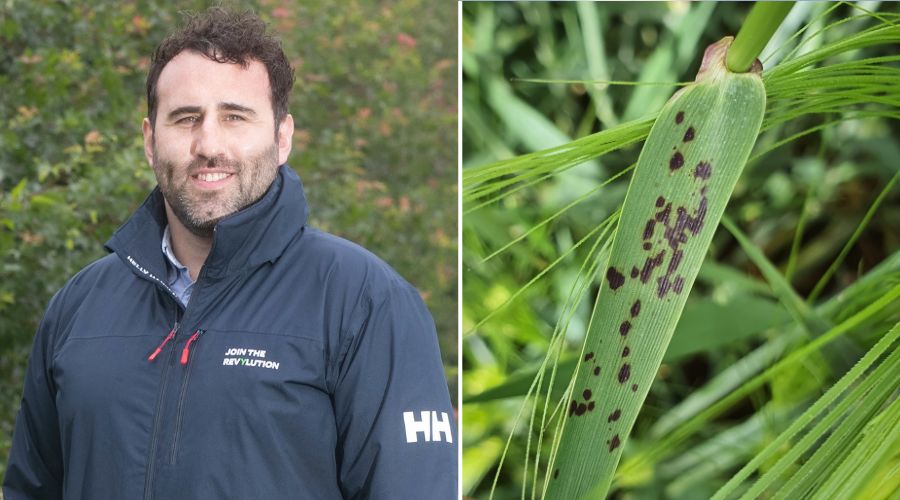Expert warns that dry conditions may complicate barley disease control
16th April 2025
As winter barley crops start to reach the critical T1 (growth stage 30-31) fungicide timing, growers are advised to assess disease risk carefully, as prolonged dry conditions could complicate treatment decisions.

Hutchinsons head of integrated crop management, David Howard, said that overall disease pressure may be generally lower after the driest March in 60 years and a dry start to April, but short-term stress and nutrient deficiencies caused by the lack of rain could increase the risks from some diseases.
The expert added: “Crops remain variable across the UK, largely based on the state of soils at drilling and the weather received over winter. Prolonged cool nights and dry weather have extended early growth stages, but with daytime temperatures spiking into the high teens, some barley crops are now moving rapidly towards T1.”
Mr Howard has also warned that plant defences may be reduced under current conditions, especially if weather remains dry, so growers must carefully assess disease risks in individual crops when determining fungicide choices.
Variable disease picture
Early reports from the Southwest suggest that stressful conditions could mean ramularia symptoms are seen earlier this year, especially on light soils that are rapidly drying out or in barley crops with significant nutrient or pest stress.
“Mildew is also widespread, especially in crops stressed by poor weather, high nitrogen levels, or dry weather,” Mr Howard said.
On a more positive note, net blotch and rhynchosporium pressure are generally lower than previous wet years, and cooler temperatures have subdued brown rust up until now, although he says there are some early reports of the disease appearing in more susceptible hybrid varieties.
Targeted T1
Growth stages 30-31 are critical in winter barley for both effective disease control and yield optimisation, Mr Howard continued.
“Barley grows rapidly during this time, adding biomass quickly and relying heavily on lower leaves, which contribute significantly to green area index. Barley’s lower leaves are larger and play a more prominent role in photosynthesis alongside stems and ears, unlike wheat, where upper leaves dominate yield contribution.
“Retention of tillers is also essential in barley to maintain yield potential; therefore, getting disease control right and reducing plant stress at this early timing is key.”
Combining SDHI + azole products can provide robust activity against multiple diseases, but as always, he urges growers to mix modes of action and alternate actives within the programme to mitigate resistance risks.
Net blotch strains resistant to SDHIs and strobilurins are becoming more common, for example, although there is differential control between strobilurins, with pyraclostrobin being less affected than others, he noted.
For ramularia, the most active product is now pydiflumetofen, so should be considered where significant disease is already confirmed, he advises. If not, the product is best kept for T2, where ramularia is more commonly seen. Another option in high-pressure situations is mefentrifluconazole, and he also suggests adding folpet, or a biostimulant such as Scyon, for consistent protection.
Where mildew needs controlling, cyflufenamid is effective, but he reminds growers to avoid consecutive sprays of cyflufenamid to prevent resistance. “For moderate cases, consider prothioconazole-based products.”
Benzovindiflupyr, tebuconazole and strobilurins such as pyraclostrobin, are all options for brown rust, but tailor choices to specific situations and the need for curative control and/or lasting protection, he says.
Mr Howard also noted that if T0 applications were recently applied, growers have the flexibility to adapt the T1 timing to GS 31/32, but if no T0 was applied, the earlier GS 30/31 timing will be essential and higher dose rates may be needed to improve curativity where required.
Read more arable news.


